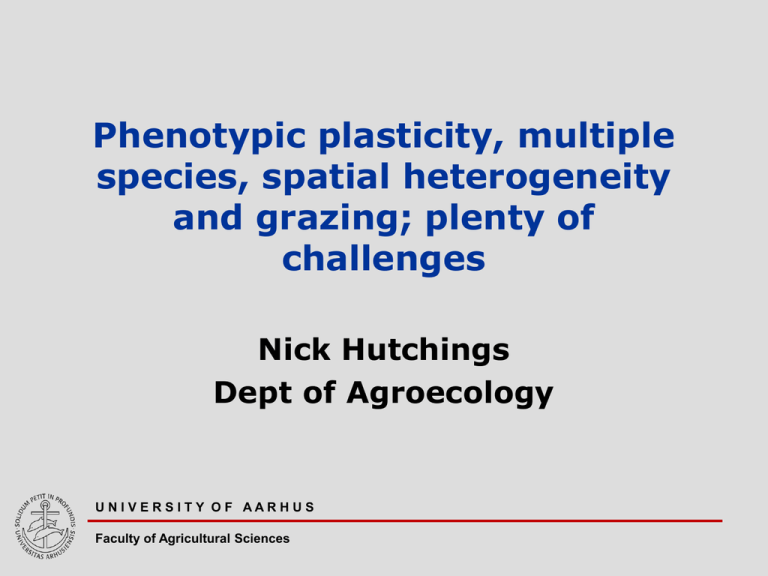Phenotypic plasticity, multiple species, spatial heterogeneity and grazing; plenty of challenges
advertisement

Phenotypic plasticity, multiple species, spatial heterogeneity and grazing; plenty of challenges Nick Hutchings Dept of Agroecology U N I V E R S I T Y O F AAR H U S Faculty of Agricultural Sciences Grass is special Leaf turnover live Time dead Grass is special Leaf turnover Tiller density varies greatly Grass is special Leaf turnover Tiller density varies greatly Vegetative & reproductive growth Modelling Tissue flow Leaf age classes (Thornley approach) Tiller density varies greatly Model bulk density Vegetative & reproductive growth Model development stage Cutting/grazing Vernalisation and daylength effects Grassland is special Perennial crop, repeatedly harvested Multiple species Grass/clover Grazers are not mowing machines Periodic not continuous defoliation Selective grazing What goes in one end comes out the other Dung and urine patches Modelling Perennial crop, repeatedly harvested Generally not a problem Regrowth after large harvests (low LAI) Multiple species Modelling competition is difficult Spatial refuges Periodic defoliation/selective grazing Divide sward into homogenous patches, based on history of defoliation Model animal selection Hutchings and Gordon (2001) Ecological Modelling 136: 209–222 Modelling (cont) Dung and urine Divide sward into homogenous patches, based on excretal returns Hutchings et al (2007) Agriculture, Ecosystems and Environment 121: 153–163 Grassland management is special Farmers aim to balance roughage production and demand Decisions are made day-to-day Current feed demand Winter feed demand Management methods Conservation v grazing Vary animal feeding Several models available Summary Modelling grass, grassland and management is challenging A range of tools exist, varying in complexity How should we use them? Detailed questions need detailed models Hutchings (1991) Ecological Modelling, 59: 73-91 www.fasset.dk Conclusions Modelling grazing is complex A range of tools/models are available Some questions remain No universal approach Tailor modelling to objectives How to choose an appropriate level of complexity? How to link existing models? Conceptually Technically




